Speaker
Description
In recent years, machine learning using liquid metal properties and theoretical models as input has led to rapid progress in the development of metallic glasses as well as many functional materials. It is therefore expected to become important in the future to use liquid structures as training data for machine learning to predict glass-forming ability. However, as metallic glasses are often multicomponent alloys, it takes a lot of time to cover their liquid structures. Therefore, it is important to predict the liquid structure of alloys from monatomic liquid structures, but at present, the accurate liquid structure data of some elements with particularly high melting points are not available. Therefore, the aim of this study was to systematise liquid structure information by focusing on the main constituent elements of metallic glasses and performing precise structure analysis of metallic liquids at high temperature typically over 2000 K. In the present study, structural data for eight elements, including Hf with a melting point of 2506 K, were measured using a combination of synchrotron X-ray diffraction and aerodynamic levitation at SPring-8. Persistent homology analysis was performed on 3D coordinates obtained from RMC modelling performed on the S(Q), and relationships with physical properties such as molar volume and entropy were investigated.

